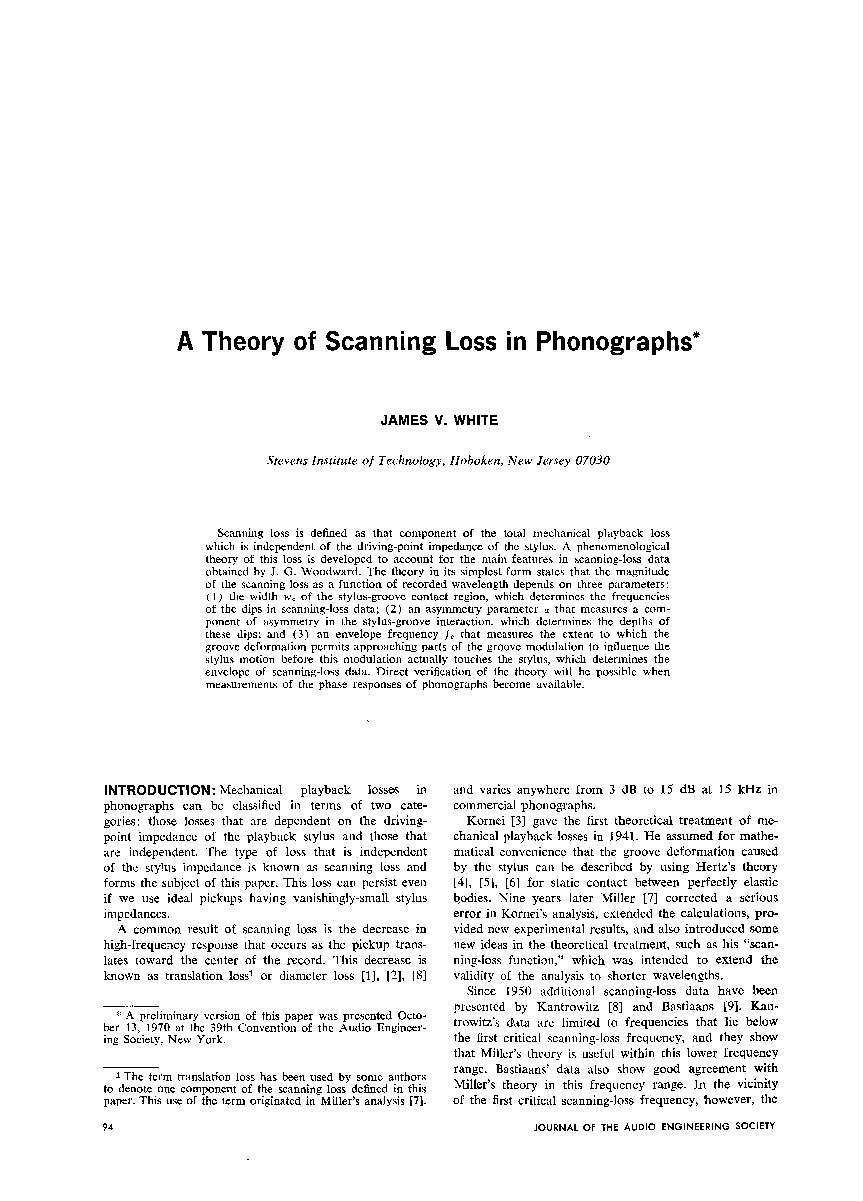Home / Publications / E-library page
You are currently logged in as an
Institutional Subscriber.
If you would like to logout,
please click on the button below.
Home / Publications / E-library page
Only AES members and Institutional Journal Subscribers can download
Scanning loss is defined as that component of the total mechanical playback loss which is independent of the driving-point impedance of the stylus. A phenomenological theory of this loss is developed to account for the main features in scanning-loss data obtained by J. G. Woodward. The theory in its simplest form states that the magnitude of the scanning loss as a function of recorded wavelength depends on three parameters: (1) width w of the stylus-groove contact region, which determines the frequencies of the dips in scanning-loss data; (2) an asymmetry parameter a that measures a component of asymmetry in the stylus-groove interaction, which determines the depths of thses dips; and (3) an envelope frequency f that measures the extent to which the groove deformation permits approaching parts of the groove modulation to influence the stylus motion before this modulation actually touches the stylus, which determines the envelope of scanning-loss data. Direct verification of the theory will be possible when measurements of the phase responses of phonographs become available.
Author (s): White, James V.
Affiliation:
Stevens Institute of Technology, Hoboken, NJ
(See document for exact affiliation information.)
Publication Date:
1973-03-06
Import into BibTeX
Permalink: https://aes2.org/publications/elibrary-page/?id=2005
(869KB)
Click to purchase paper as a non-member or login as an AES member. If your company or school subscribes to the E-Library then switch to the institutional version. If you are not an AES member Join the AES. If you need to check your member status, login to the Member Portal.

White, James V.; 1973; A Theory of Scanning Loss in Phonographs [PDF]; Stevens Institute of Technology, Hoboken, NJ; Paper ; Available from: https://aes2.org/publications/elibrary-page/?id=2005
White, James V.; A Theory of Scanning Loss in Phonographs [PDF]; Stevens Institute of Technology, Hoboken, NJ; Paper ; 1973 Available: https://aes2.org/publications/elibrary-page/?id=2005